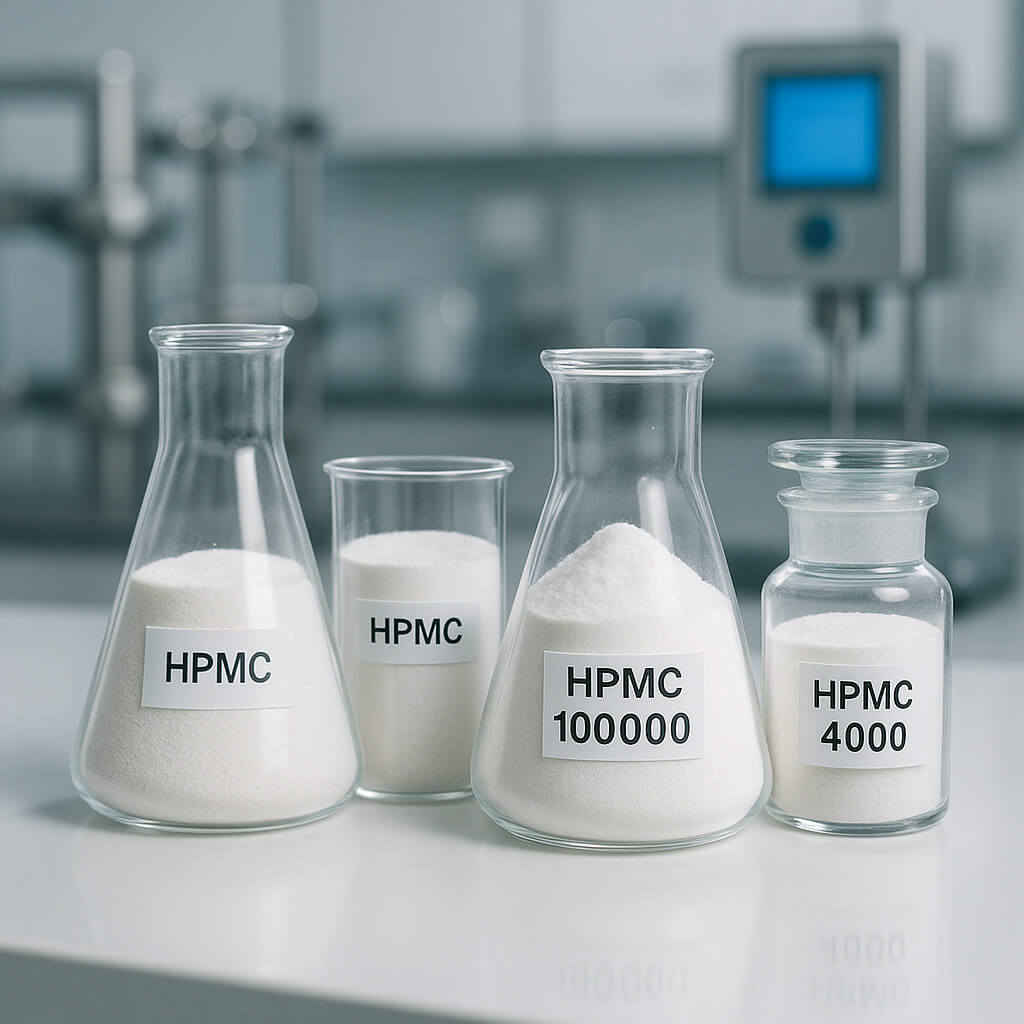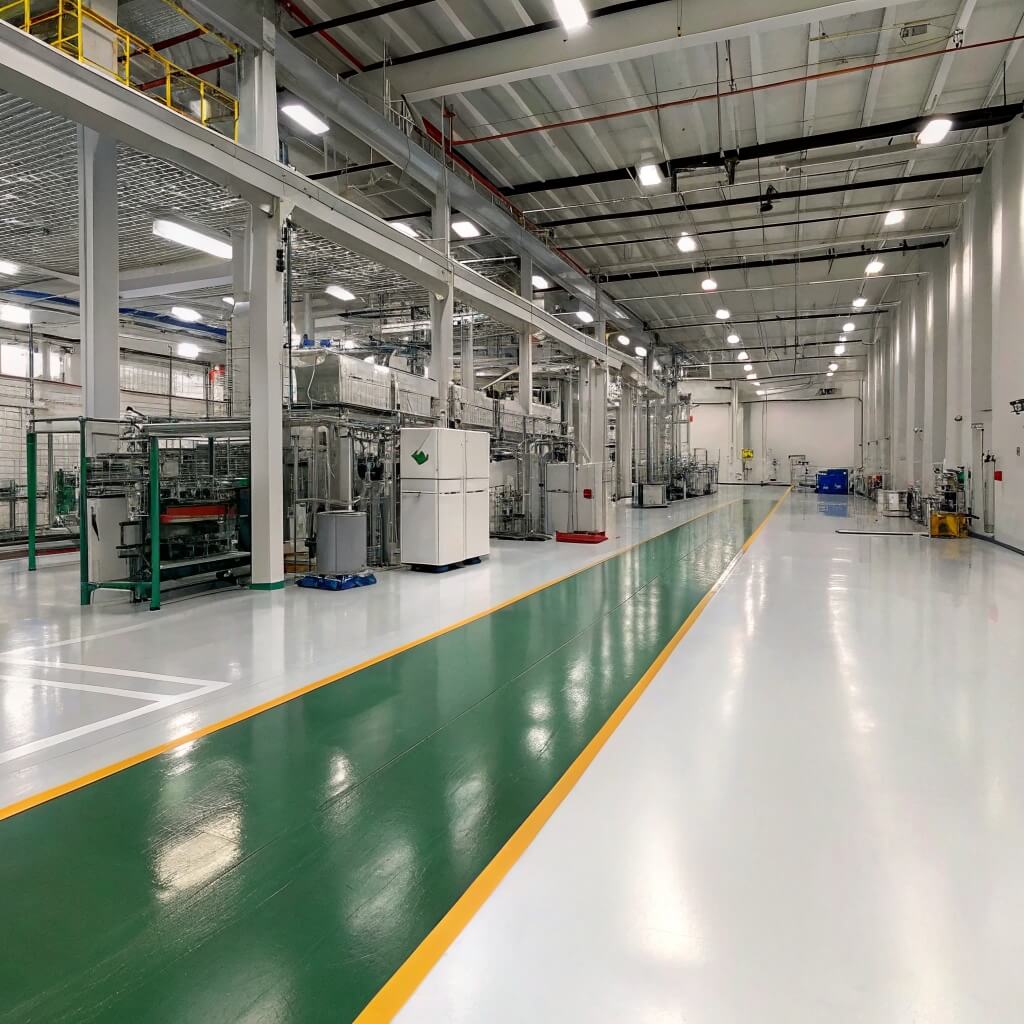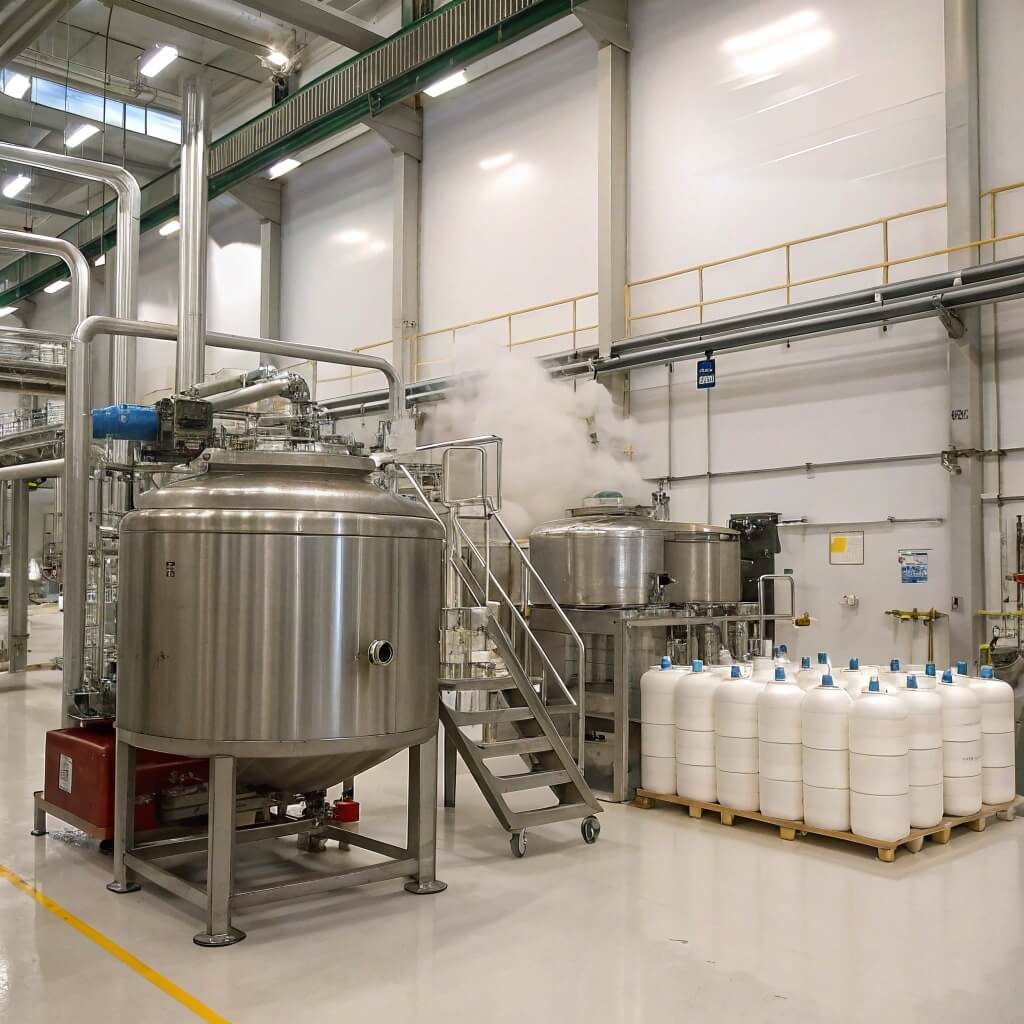Hydroxypropyl methylcellulose (HPMC) stands as one of the most versatile excipients in modern pharmaceutical formulations. This semi-synthetic polymer derived from cellulose has transformed drug delivery systems across the pharmaceutical industry. For pharmaceutical manufacturers and formulation scientists, understanding HPMC’s applications is crucial for developing effective medications with controlled release profiles, enhanced stability, and improved bioavailability. This article examines the multifaceted applications of HPMC in pharmaceutical preparations, from its fundamental properties to its implementation in advanced drug delivery systems, providing practical insights for pharmaceutical professionals seeking to optimize their formulations.

1. What Is Hydroxypropyl Methylcellulose And Why Is It Important In Pharmaceuticals?
Hydroxypropyl methylcellulose, commonly abbreviated as HPMC, is a semi-synthetic, inert polymer derived from natural cellulose through chemical modification. The structure consists of a cellulose backbone with methoxyl and hydroxypropyl substituents, which significantly alter its physicochemical properties compared to unmodified cellulose. HPMC belongs to the broader family of cellulose ethers but offers distinct advantages that have made it indispensable in pharmaceutical formulations.
But here’s what makes it truly special: HPMC combines excellent film-forming capabilities with remarkable versatility across various pharmaceutical applications. Its non-ionic nature minimizes interactions with active pharmaceutical ingredients (APIs), making it compatible with a wide range of drug compounds.
The development of HPMC dates back to the mid-20th century, but its pharmaceutical applications have expanded dramatically in recent decades. Today, it holds regulatory approval across major markets including FDA (US), EMA (Europe), and PMDA (Japan) classifications as a generally recognized as safe (GRAS) excipient.
| Propiedad | Característica | Pharmaceutical Significance |
|---|---|---|
| Chemical Nature | Non-ionic cellulose ether | Minimizes drug-excipient interactions |
| Solubilidad | Soluble in cold water, forms viscous solution | Enables controlled hydration and gel formation |
| Viscosidad | Available in multiple grades (3-100,000 mPa·s) | Allows tailored release profiles |
| Gelificación térmica | Forms gel at elevated temperatures | Useful for thermosensitive formulations |
| Surface Activity | Moderate surface tension reduction | Stabilizes suspensions and emulsions |
HPMC offers several key advantages over other cellulose derivatives such as methylcellulose (MC), hydroxyethylcellulose (HEC), and sodium carboxymethylcellulose (CMC). Its superior stability across a wide pH range (3-11) makes it suitable for formulations containing acidic or basic drugs. Unlike ionic polymers, HPMC maintains consistent performance regardless of the ionic strength of the medium, ensuring predictable drug release profiles even with changing gastrointestinal conditions.
2. How Does HPMC Function As A Controlled Release Agent In Oral Medications?
The controlled release mechanism of HPMC in oral solid dosage forms represents one of its most valuable pharmaceutical applications. When an HPMC-based tablet encounters aqueous media in the gastrointestinal tract, a complex series of events occurs that regulates drug release over extended periods.
Upon contact with water, HPMC undergoes hydration at the tablet surface, forming a gel layer that acts as a diffusion barrier. This process involves several sequential steps: initial wetting, polymer relaxation, and progressive hydration leading to a concentration gradient within the gel layer.
Quizás te estés preguntando: What factors influence this release mechanism? The molecular weight and substitution pattern of HPMC significantly impact gel formation kinetics and strength. Higher molecular weight grades produce stronger, more resistant gel layers that slow drug release. Similarly, the ratio of hydroxypropyl to methoxyl substitution affects hydration rate, with higher hydroxypropyl content generally resulting in faster hydration.
| Concentración de HPMC | Typical Release Duration | Application Example |
|---|---|---|
| 10-15% | 4-6 hours | Twice-daily formulations |
| 20-30% | 8-12 horas | Once-daily formulations |
| 30-40% | 12-24 horas | Tabletas de liberación prolongada |
| >40% | >24 hours | Very poorly soluble drugs |
| <10% | <4 hours | Modified immediate release |
Drug solubility plays a crucial role in determining the dominant release mechanism from HPMC matrices. For highly water-soluble drugs, release occurs primarily through diffusion across the gel layer. In contrast, poorly soluble compounds depend more on erosion of the gel layer for their release. Most formulations exhibit a combination of these mechanisms, with their relative contribution varying based on drug properties and matrix composition.
Several commercial products demonstrate the successful implementation of HPMC-based controlled release technology. For instance, extended-release formulations of metformin hydrochloride utilize HPMC matrices to provide 24-hour glucose control with once-daily dosing. Similarly, certain modified-release venlafaxine products employ HPMC to achieve consistent plasma concentrations while minimizing side effects associated with concentration fluctuations.
3. What Role Does HPMC Play In Tablet Coating Applications?
Tablet coating represents another major application area for HPMC in pharmaceutical formulations. As a film-forming agent, HPMC creates protective barriers around tablet cores, serving multiple functional and aesthetic purposes simultaneously.
The film-forming properties of HPMC stem from its ability to form continuous, coherent films upon solvent evaporation. When applied as an aqueous or organic solution, HPMC molecules align and interlink during drying, creating a uniform coating layer. This process depends on several critical parameters including solution concentration (typically 5-15% w/w), viscosity grade selection, and coating process variables such as spray rate, pan speed, and drying temperature.
The truth is: HPMC offers distinct advantages compared to other coating polymers. Unlike acrylic polymers that require plasticizers, HPMC forms flexible films without additional plasticization, simplifying formulation. Compared to polyvinyl alcohol (PVA), HPMC demonstrates superior stability in high-humidity conditions.
| Coating Polymer | Moisture Barrier | Oxygen Barrier | Enmascaramiento del sabor | Process Complexity |
|---|---|---|---|---|
| HPMC | Moderado | Moderado | Bien | Bajo |
| Acrylic Polymers | Alto | Alto | Excelente | Moderado |
| PVA | Moderado | Bien | Bien | Bajo |
| etilcelulosa | Excelente | Excelente | Excelente | Alto |
| HPMC-AS | Alto | Alto | Excelente | Moderado |
HPMC coatings significantly impact tablet stability by providing protection against environmental factors. The hydrophilic nature of HPMC creates a moisture barrier that, while not completely impermeable, reduces moisture uptake rate. This protection is particularly valuable for moisture-sensitive active ingredients that might otherwise degrade through hydrolysis or other moisture-catalyzed reactions.
For tablets containing bitter or unpleasant-tasting drugs, HPMC coatings offer effective taste-masking capabilities. The film creates a physical barrier that prevents immediate contact between the drug and taste receptors in the mouth. This property is especially important for chewable tablets or orally disintegrating formulations where taste perception significantly impacts patient acceptance and compliance.
4. How Can HPMC Improve Solubility And Bioavailability Of Poorly Soluble Drugs?
Poor aqueous solubility represents one of the most significant challenges in pharmaceutical development, with an estimated 70-90% of new chemical entities exhibiting solubility limitations. HPMC has emerged as a valuable tool for addressing this challenge through various solubilization strategies.
HPMC functions as a solubility enhancer through several mechanisms. First, it acts as a crystallization inhibitor, preventing or delaying the recrystallization of drugs from supersaturated solutions. Second, it forms hydrogen bonds with drug molecules, disrupting crystal lattice formation and promoting amorphous state retention. Third, its surface-active properties reduce interfacial tension between drug particles and aqueous media, enhancing wettability and dissolution rate.
Aquí está la parte fascinante: HPMC-based amorphous solid dispersions (ASDs) represent one of the most effective approaches for improving the bioavailability of poorly soluble compounds. In these systems, the drug is molecularly dispersed within an HPMC matrix, existing in a high-energy amorphous state rather than a crystalline form. This amorphous state exhibits higher apparent solubility and dissolution rate compared to the crystalline counterpart.
| Preparation Method | Principle | Ventajas | Limitaciones |
|---|---|---|---|
| Spray Drying | Solvent evaporation | Suitable for heat-sensitive drugs | Organic solvent use |
| Hot-Melt Extrusion | Thermal processing | Solvent-free, continuous process | Thermal stress |
| Rotary Evaporation | Solvent removal under vacuum | Simple equipment | Batch variability |
| Freeze Drying | Sublimation of frozen solvent | Preserves amorphous state | Time-consuming, expensive |
The stability enhancement of supersaturated drug solutions represents another critical function of HPMC in solubility improvement. When a poorly soluble drug creates a supersaturated solution (concentration exceeding equilibrium solubility), it tends to precipitate rapidly, negating the solubility advantage. HPMC inhibits this precipitation through steric hindrance and specific interactions with drug molecules, maintaining the supersaturated state for extended periods and allowing greater absorption.
Several commercial products demonstrate the successful application of HPMC in bioavailability enhancement. For example, certain formulations of itraconazole utilize HPMC-based solid dispersions to overcome the drug’s inherently poor solubility, achieving therapeutic plasma concentrations that would be unattainable with conventional formulations.
5. What Are The Critical Quality Parameters When Selecting HPMC For Specific Formulations?
Selecting the appropriate HPMC grade for a specific pharmaceutical application requires careful consideration of multiple quality parameters that directly impact formulation performance and manufacturing processability.
HPMC is available in numerous viscosity grades, typically ranging from 3 to 100,000 mPa·s (measured as a 2% aqueous solution at 20°C). This viscosity is directly related to the polymer’s molecular weight and significantly influences its functional properties. Lower viscosity grades (3-100 mPa·s) are preferred for film coating applications due to their ability to form low-viscosity solutions at workable concentrations. Medium viscosity grades (100-15,000 mPa·s) find application in controlled release matrices and as binders. High viscosity grades (15,000-100,000 mPa·s) provide robust gel structures for extended-release formulations requiring prolonged drug release.
The bottom line is: Particle size distribution and flow properties significantly impact manufacturing processes, particularly for direct compression formulations. Finer particle sizes generally provide better content uniformity but may exhibit poorer flow characteristics. Manufacturers often offer specialized grades with modified particle size distributions and flow enhancers for direct compression applications.
| Parámetro de calidad | Método de prueba | Typical Specification | Impact on Formulation |
|---|---|---|---|
| Viscosidad | viscosímetro rotacional | Grade-specific range | Release rate, processing |
| Tipo de sustitución | IR spectroscopy, NMR | USP/EP specifications | Solubility, gelation, stability |
| Tamaño de partícula | Difracción láser | D90 < 100 μm (typical) | Flow, content uniformity |
| Contenido de humedad | Pérdida por secado | ≤ 5% | Stability, processing |
Compatibility with active pharmaceutical ingredients represents a critical consideration in HPMC selection. While HPMC is generally non-reactive due to its non-ionic nature, specific interactions can occur with certain drug classes. For instance, drugs containing phenolic groups may form hydrogen bonds with HPMC, potentially affecting release kinetics. Similarly, highly lipophilic compounds might exhibit uneven distribution within HPMC matrices.
Batch-to-batch consistency remains essential for reliable pharmaceutical manufacturing. Variations in critical parameters such as viscosity, substitution pattern, or particle size distribution can significantly impact product performance. Reputable suppliers implement robust quality management systems with comprehensive certificate of analysis documentation and statistical process control to minimize variability.
6. How Is HPMC Applied In Novel Drug Delivery Systems?
Beyond conventional tablets and capsules, HPMC has found expanding applications in advanced drug delivery systems that target specific administration routes or release mechanisms.
Mucoadhesive drug delivery systems utilize HPMC’s ability to interact with mucin through hydrogen bonding and polymer entanglement. When formulated at appropriate concentrations, HPMC creates temporary adhesion to mucosal surfaces, prolonging residence time and enhancing local or systemic drug absorption. This property proves particularly valuable for buccal, vaginal, and rectal delivery systems where extended contact with the absorption surface improves bioavailability.
It’s worth noting that: HPMC plays a crucial role in ophthalmic preparations due to its excellent ocular compatibility and pseudoplastic rheological behavior. In eye drop formulations, HPMC increases solution viscosity at rest, prolonging corneal contact time, while exhibiting reduced viscosity during blinking, minimizing discomfort. Typical concentrations range from 0.2-0.7% for artificial tear products and 0.5-1.5% for drug-containing solutions.
| Delivery System | Concentración de HPMC | Función | Therapeutic Applications |
|---|---|---|---|
| Soluciones oftálmicas | 0.2-1.5% | Viscosity enhancer, lubricant | Dry eye, glaucoma, inflammation |
| Buccal Films | 5-20% | Film former, mucoadhesive | Local anesthetics, hormones |
| Nasal Gels | 1-3% | Viscosity modifier, mucoadhesive | Allergic rhinitis, migraine |
| Vaginal Formulations | 2-5% | Gel base, controlled release | Contraception, infection |
Nasal and buccal delivery systems benefit from HPMC’s film-forming and mucoadhesive properties. Buccal films containing HPMC provide a convenient platform for drugs requiring rapid absorption or those susceptible to first-pass metabolism. The polymer concentration and grade selection directly influence film properties including dissolution rate, mechanical strength, and mucoadhesion duration.
HPMC-based hydrogels represent another significant application area, particularly for topical and transdermal delivery systems. These three-dimensional polymer networks absorb and retain large quantities of water while maintaining structural integrity. The resulting semi-solid matrices provide controlled drug release, improved skin hydration, and enhanced permeation for appropriate drug candidates.
Recent innovations have expanded HPMC applications to include 3D-printed dosage forms, enabling personalized medicine approaches with customized dose, release profile, and geometry. The excellent printability of HPMC-based formulations, combined with their well-established safety profile, positions them as preferred materials for pharmaceutical 3D printing technologies.
Conclusión
Hydroxypropyl methylcellulose stands as a cornerstone excipient in modern pharmaceutical technology, offering unparalleled versatility across diverse formulation challenges. From its fundamental role in controlled release matrices to advanced applications in novel drug delivery systems, HPMC continues to enable pharmaceutical innovations that improve therapeutic outcomes and patient experiences.
The multifunctional nature of HPMC—combining film-forming capabilities, controlled hydration properties, solubility enhancement effects, and excellent safety profile—makes it an invaluable tool for formulation scientists addressing complex drug delivery challenges. Its availability in various grades with different viscosities and substitution patterns provides formulators with precise control over drug release kinetics, processing characteristics, and final product performance.
As pharmaceutical development continues to advance toward more complex active ingredients and personalized medicine approaches, HPMC’s role will likely expand further. Its compatibility with emerging technologies such as 3D printing, nanotechnology-based delivery systems, and combination products positions it for continued relevance in pharmaceutical formulations of the future.
Sección de preguntas frecuentes
Q1: What is the difference between HPMC and other cellulose derivatives used in pharmaceuticals?
HPMC differs from other cellulose derivatives primarily in its substitution pattern and resulting properties. Unlike methylcellulose (MC), HPMC contains both methoxyl and hydroxypropyl substituents, providing better solubility in cold water and superior thermal gelation properties. Compared to hydroxyethylcellulose (HEC), HPMC exhibits better film-forming capabilities and controlled release characteristics. Sodium carboxymethylcellulose (CMC), being anionic, is more susceptible to pH and electrolyte effects, while HPMC’s non-ionic nature ensures consistent performance across varying physiological conditions.
Q2: How does the molecular weight of HPMC affect its performance in drug formulations?
The molecular weight of HPMC, typically indicated by its viscosity grade, significantly impacts its functional properties in pharmaceutical formulations. Higher molecular weight grades produce more robust gel layers with slower hydration rates, resulting in extended drug release profiles for controlled release applications. Lower molecular weight grades form less viscous solutions, making them suitable for coating applications where sprayability is critical. For solubility enhancement, medium molecular weight grades often provide the optimal balance between crystallization inhibition and processing feasibility.
Q3: Can HPMC be used in combination with other polymers in pharmaceutical formulations?
Yes, HPMC is frequently used in combination with other polymers to achieve specific formulation objectives. Common combinations include HPMC with ethylcellulose for modified release profiles, HPMC with carbomers for enhanced mucoadhesion, and HPMC with polyvinylpyrrolidone for improved solubilization effects. These polymer blends often exhibit synergistic effects that cannot be achieved with single polymers. For example, combining HPMC with pH-dependent polymers such as methacrylic acid copolymers enables targeted intestinal delivery while maintaining the controlled release benefits of HPMC.
Q4: What are the stability considerations when using HPMC in different environmental conditions?
HPMC exhibits good stability under most pharmaceutical storage conditions but requires specific considerations in certain environments. In high humidity conditions, HPMC can absorb moisture, potentially affecting its functional properties and the stability of moisture-sensitive drugs. Temperature extremes may impact HPMC performance, with very high temperatures potentially accelerating degradation through oxidation or depolymerization. HPMC solutions may undergo microbial contamination during storage, necessitating preservatives for liquid formulations. For solid dosage forms, HPMC remains stable under normal storage conditions.
Q5: How do regulatory agencies classify HPMC for pharmaceutical use?
Regulatory agencies classify HPMC as a generally recognized as safe (GRAS) pharmaceutical excipient with established monographs in major pharmacopeias including USP-NF, Ph.Eur., and JP. The FDA includes HPMC in the Inactive Ingredient Database with precedents for various routes of administration and dosage forms. The European Medicines Agency (EMA) recognizes HPMC through the Ph.Eur. monograph, which specifies quality standards and testing methods. Different HPMC grades are classified according to their substitution type and viscosity, with specific codes such as HPMC 2208 or HPMC 2910 indicating the percentage of methoxyl and hydroxypropyl substituents.




